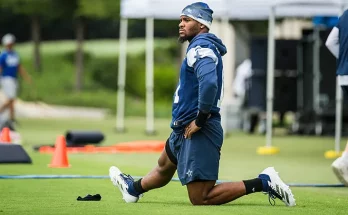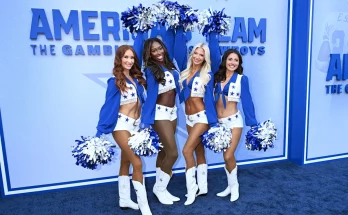The NBA offseason always provides a ripe environment for speculation, mock trades, and hypothetical scenarios that send fans into endless debates. One of the more fascinating ideas that has recently circulated involves the Boston Celtics, the defending NBA champions who now find themselves in an uncertain position after Jayson Tatum’s devastating Achilles rupture. The injury, which is expected to sideline him for the entirety of the upcoming season, has left Boston in an uncomfortable but pivotal place where they may need to evaluate their roster with short-term survival and long-term competitiveness in mind. Out of this chaos comes a mock trade suggestion from SI’s Mark Morales-Smith that sends shockwaves through both Celtics and Hornets fanbases. In his hypothetical deal, the Charlotte Hornets would acquire Jaylen Brown, Sam Hauser, and Payton Pritchard, while Boston would receive LaMelo Ball and Miles Bridges. At first glance, it’s a trade that forces one to pause, consider, and weigh the balance of risk and reward on both sides.
Jaylen Brown is 28 years old and in the prime of his career. Fresh off winning the NBA Finals MVP after Boston’s run to banner No. 18, he has proven himself as a clutch two-way force and a cornerstone player who can carry a team on both ends of the floor. Brown recently signed a five-year, $304 million supermax extension, cementing his role as one of the highest-paid players in league history. This deal was viewed as a commitment from both sides—Brown to Boston and Boston to Brown—that the partnership would continue for the foreseeable future. Yet, the dynamics of the NBA often show that no one is truly untouchable when circumstances change. With Tatum out for the season, Boston’s championship window looks altered, and while they still have depth and experience, they may lack the offensive engine required to stay competitive at the highest levels without making bold adjustments.
Enter LaMelo Ball, the former No. 3 overall pick in the 2020 NBA Draft and one of the most intriguing young guards in the league. Ball is just 23 years old, has already made an All-Star appearance, and brings with him a unique blend of playmaking, flair, and offensive creativity that could reenergize Boston’s backcourt. Unlike Brown, who thrives as a scorer and defender, Ball’s strengths lie in his vision, passing ability, and natural instinct to orchestrate an offense. For a Celtics team facing a year without Tatum, acquiring Ball would allow them to build around a younger, dynamic point guard who could keep the offense flowing while also creating a new foundation for the future. Ball, despite some injury concerns, has shown flashes of being a franchise-caliber player, and pairing him long-term with Tatum could keep Boston at the forefront of the Eastern Conference for years to come.
The inclusion of Miles Bridges complicates the equation further. Bridges, 26, has proven himself as an athletic wing capable of scoring at all three levels, finishing in transition, and playing strong defense when engaged. While his off-court issues have cast a shadow over his career, from a purely basketball perspective, he is a high-level role player who can slot into multiple positions and provide the Celtics with a much-needed scoring punch on the wing. In many ways, he would help fill some of the void left by Brown’s departure, even if he cannot replicate Brown’s All-Star level consistency. His presence would give Boston versatility, and with players like Kristaps Porziņģis, Derrick White, and Jrue Holiday still in the fold, the Celtics would remain a dangerous squad.
From Charlotte’s perspective, the appeal of this trade is straightforward. They get a bona fide superstar in Jaylen Brown, who not only brings elite production but also championship pedigree and leadership. For years, the Hornets have struggled to find relevance in the Eastern Conference, often stuck in the cycle of mediocrity and lottery picks that fail to shift the trajectory of the franchise. Acquiring Brown immediately changes that. He is the type of star who can elevate a team both on the court and in the eyes of free agents, media, and fans. For a franchise that has lacked consistent star power since the days of Alonzo Mourning and Larry Johnson, or more recently Kemba Walker, Brown represents a transformational figure. Pairing him with a young supporting cast, including Brandon Miller, the promising No. 2 pick from the 2023 draft, gives Charlotte a core that could compete for playoff spots right away.
The additional pieces in the deal also matter. Sam Hauser, while not a star, has developed into one of the league’s most efficient three-point shooters. His ability to space the floor would be invaluable to a team like Charlotte that has often lacked reliable perimeter shooting. Payton Pritchard, meanwhile, is a scrappy guard capable of providing instant offense off the bench. He may not be a long-term starter, but he is the type of rotational piece every team needs to win games across an 82-game season. Both Hauser and Pritchard would deepen Charlotte’s rotation and give them more reliability than they’ve had in years past.
Still, the question remains: who says no? For Boston, the decision comes down to whether or not they truly believe LaMelo Ball is a worthy centerpiece to pair with Jayson Tatum for the next decade. Trading Brown, a proven Finals MVP, for Ball, who is still unproven in terms of postseason success, is a gamble. The Celtics would essentially be swapping the certainty of Brown’s two-way dominance for the potential of Ball’s offensive brilliance. Ball’s injury history, which includes multiple ankle issues, is a concern that cannot be ignored. The Celtics’ front office would have to weigh whether they can trust Ball to stay healthy enough to justify moving on from one of their most reliable stars. At the same time, Bridges’ off-court baggage could make Boston hesitant to take on the risk of integrating him into a locker room that prides itself on culture and chemistry.
On the flip side, Charlotte would be betting on Brown being enough to lead them into a new era of competitiveness. While he is undoubtedly a star, history has shown that even great players can struggle to turn around franchises without the right supporting cast. The Hornets would be surrendering their best player in LaMelo Ball, who, despite injuries, has given them hope for the future. Letting go of a 23-year-old former All-Star guard for a 28-year-old wing could be viewed as a short-sighted move if Brown alone cannot elevate the team into serious contention. Additionally, Charlotte would be committing to Brown’s massive contract, which runs into the $300 million range. That type of financial commitment for a small-market team is daunting, especially if Brown does not immediately turn them into a playoff contender.
Another factor to consider is the emotional and symbolic weight of such a trade. Jaylen Brown has become synonymous with Boston basketball over the past several years. He has grown from a raw, athletic wing into one of the most polished and respected stars in the league. Trading him so soon after he led the Celtics to a championship could create backlash among fans and send a message that loyalty is fleeting, even in the wake of success. For Charlotte, trading away Ball, a fan favorite who represents excitement and marketability, could alienate a fanbase that has clung to him as a symbol of hope in otherwise dark times.
Ultimately, the trade suggestion is fascinating precisely because it challenges both teams to confront uncomfortable truths. For Boston, it forces the question of whether Brown is the long-term running mate they want for Tatum, especially after the Achilles injury shifts the timeline of contention. For Charlotte, it presents the temptation of acquiring an established star at the cost of a younger, less proven one. The balance between present competitiveness and future promise is what makes this scenario compelling. The reality is that mock trades like this often never come to fruition because the stakes are simply too high and the risks too pronounced. But they do serve an important purpose: they remind us of how fluid the NBA landscape can be, how quickly circumstances can shift, and how franchises must constantly weigh the value of certainty against the allure of potential.
In the end, the answer to who says no likely depends on which lens you use to evaluate the deal. From Boston’s perspective, they may hesitate because Ball’s durability and Bridges’ baggage make the trade too risky compared to keeping Brown. From Charlotte’s perspective, they may balk at surrendering their young star point guard for a veteran wing who, while elite, may not single-handedly lift them out of the middle tier of the conference. The beauty of the debate is that both sides have valid arguments, and that is what makes this trade one that fans and analysts will continue to argue about long after the mock draft season ends. For now, Jaylen Brown remains in Boston, LaMelo Ball remains in Charlotte, and the NBA world keeps spinning with possibilities that remind us how unpredictable this league truly is.
Word count: ~1510


